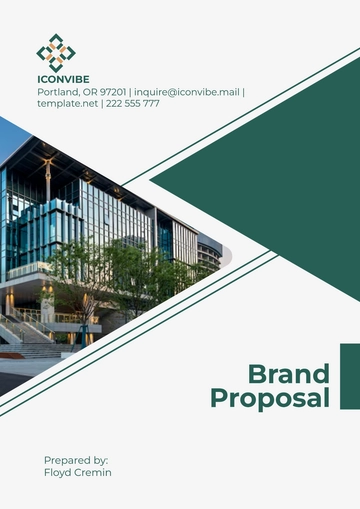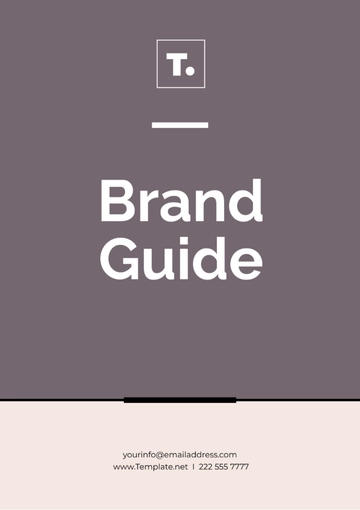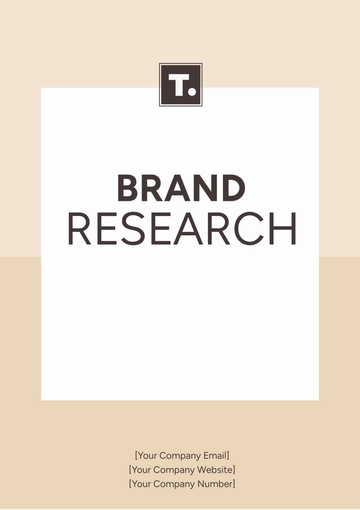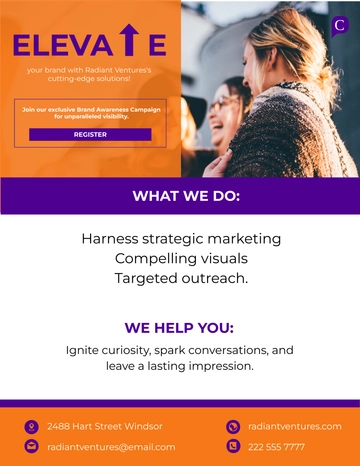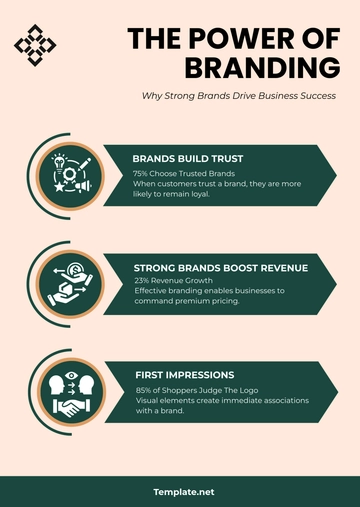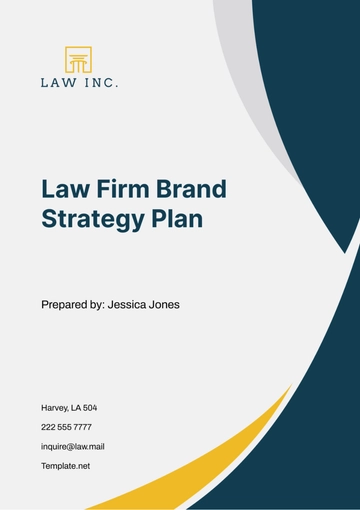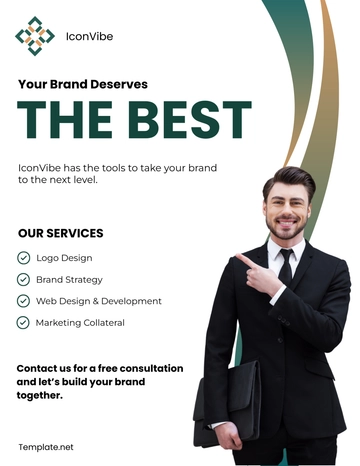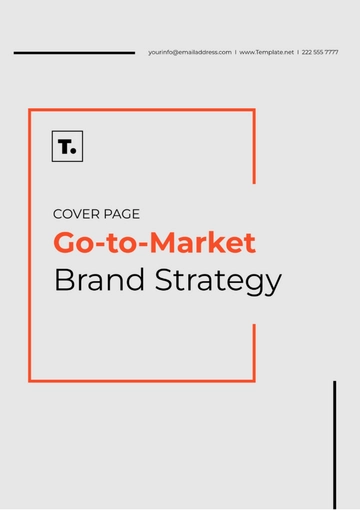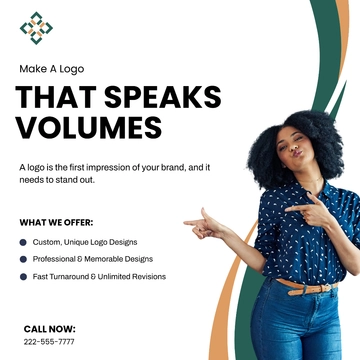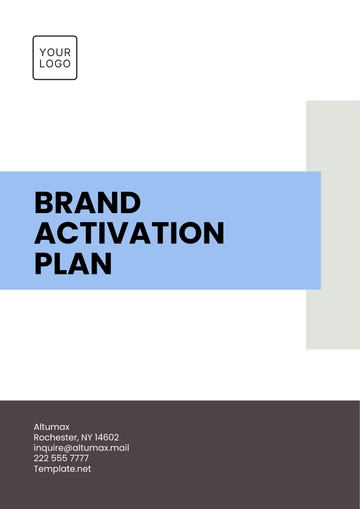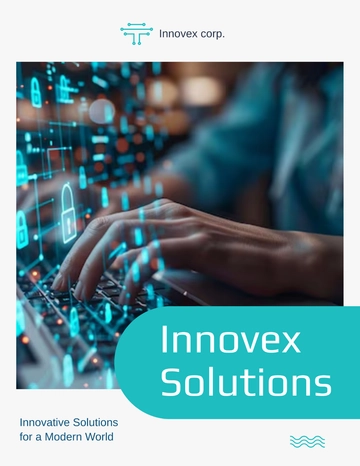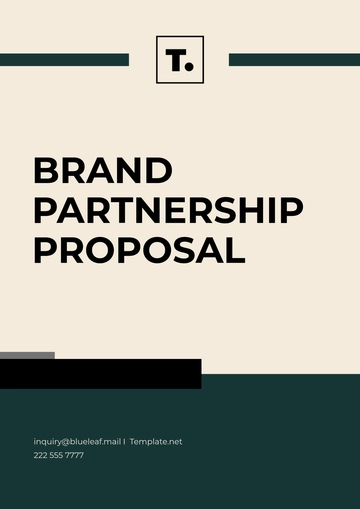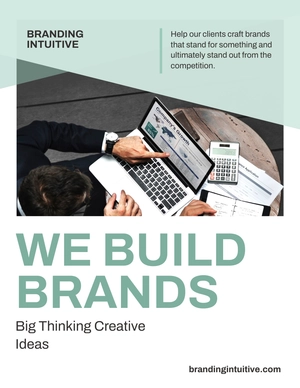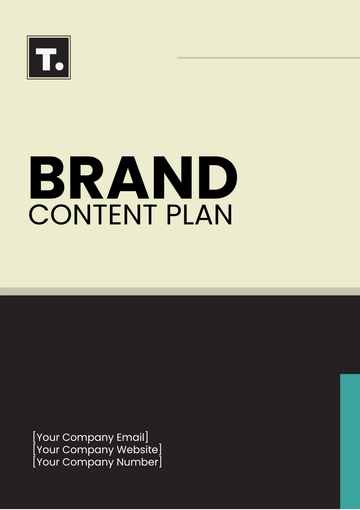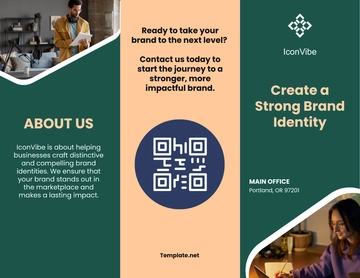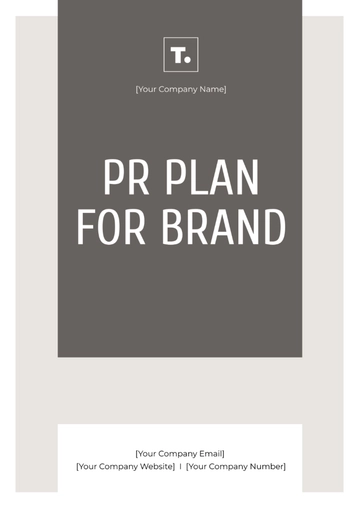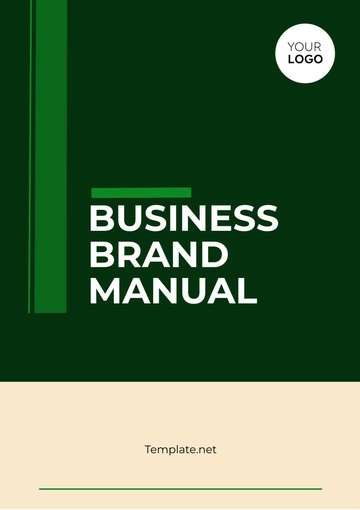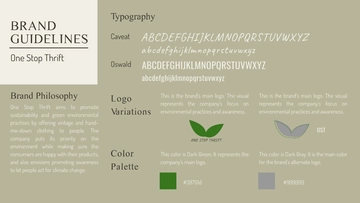Free Marketing Brand Asset Management Document
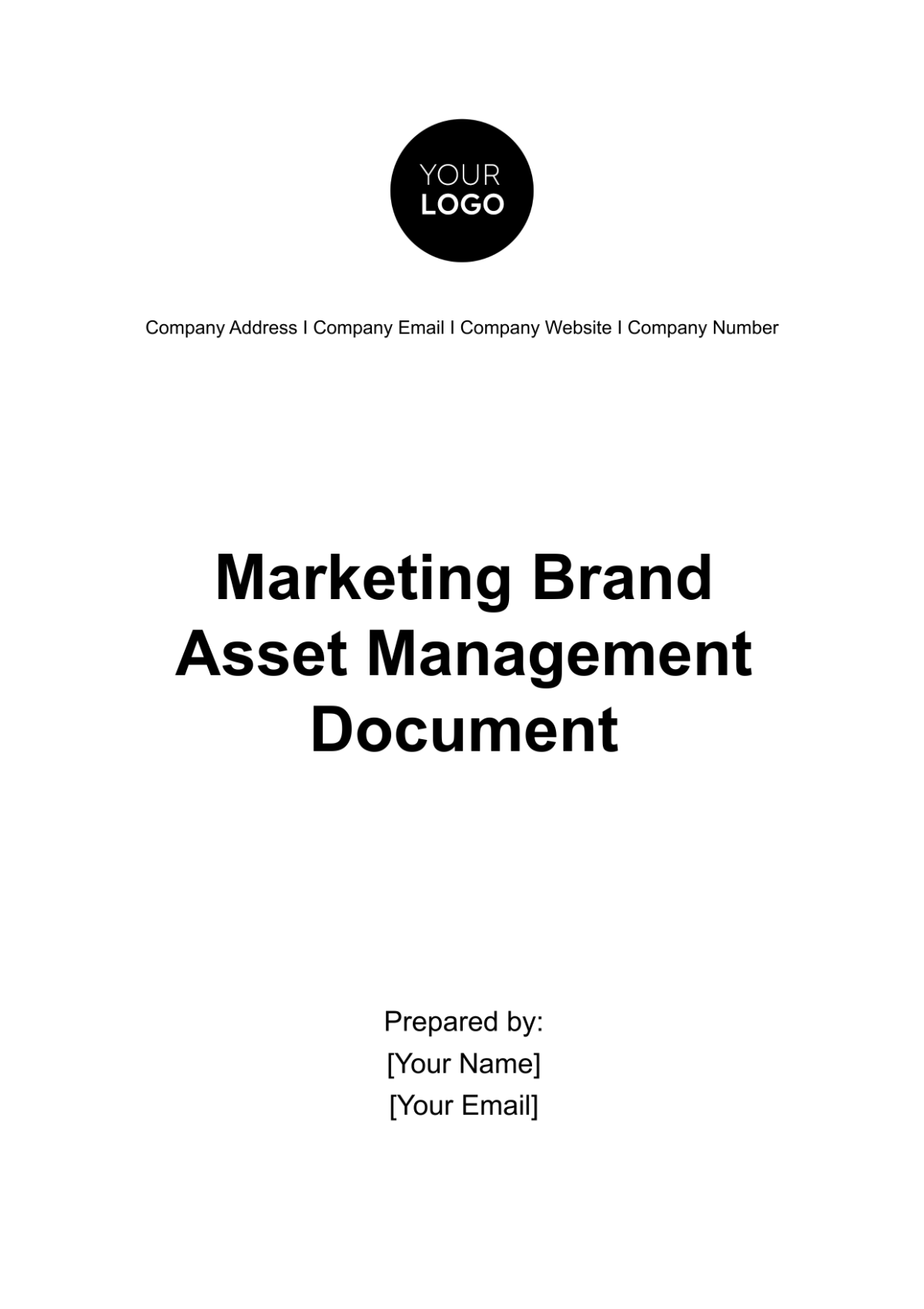
Management Document
1. Introduction
The Marketing Brand Asset Management Document is a comprehensive guide aimed at effectively managing and preserving [Your Company Name]'s valuable brand assets. Maintaining consistency and integrity across all brand touchpoints is essential to strengthen brand identity, create brand loyalty, and drive business success. This document outlines the strategies and guidelines for managing brand assets efficiently.
2. Executive Summary
The Executive Summary provides an overview of the Marketing Brand Asset Management Document, highlighting its key components and objectives:
Mission Statement
At [Your Company Name], our mission is to lead the way toward a more sustainable future. We are committed to providing eco-friendly solutions and promoting responsible practices that benefit our planet and enhance the well-being of all.
Vision Statement
Our vision at [Your Company Name] is to be a global leader in eco-conscious innovation and sustainability. We aspire to inspire positive change by offering cutting-edge products and services that empower individuals and businesses to make environmentally responsible choices, ultimately leading to a harmonious coexistence with nature.
These statements reflect our dedication to environmental stewardship, innovation, and a brighter, more sustainable world for future generations.
3. Purpose
The purpose of this document is to establish a structured framework for the management and usage of [Your Company Name]'s brand assets. This framework ensures that all brand elements, from logos to digital assets, are consistently utilized to reinforce the brand's identity.
4. Methodology
The document outlines the methodology used to manage brand assets, encompassing asset categorization, storage, accessibility, and usage guidelines. It emphasizes the importance of alignment with brand guidelines and compliance with legal regulations.
5. Brand Asset Categories
[Your Company Name]'s brand assets encompass various elements, each playing a vital role in shaping our brand identity. These assets are categorized into the following key types:
A.Visual Assets
Logo: Our logo is the visual cornerstone of our brand. It exists in various formats, including color, grayscale, and monochrome versions.
Typography: Our brand typography includes specific fonts used in all communications to maintain consistency.
Color Palette: A defined color palette ensures that our brand colors are accurately reproduced across all materials.
Imagery: High-quality imagery and photography that align with our brand values and messaging.
B. Digital Assets
Website: Our website is a critical digital asset, showcasing our brand identity and providing essential information to our audience.
Social Media Graphics: Graphics tailored for various social media platforms to ensure consistent branding.
Email Templates: Branded email templates for official communications with stakeholders.
C. Marketing Collateral
Brochures and Flyers: Printed materials used in marketing and promotions.
Business Cards: Official business cards for [Your Company Name] representatives.
Presentations: Templates for presentations, ensuring brand consistency in visual elements.
D. Marketing Campaign Materials
Advertising Banners: Visual assets used in online and offline advertising campaigns.
Promotional Videos: Video content designed for marketing and promotional purposes.
Print Advertisements: Branded advertisements for print media publications.
E. Legal Documentation
Trademark and Copyright: Legal documents and registrations protecting our brand assets.
Licensing Agreements: Agreements outlining the terms and conditions for using our brand assets by third parties.
The effective management of these brand asset categories is integral to maintaining brand consistency and integrity.
6. Asset Storage and Accessibility
Efficient storage and accessibility of brand assets are crucial to ensure they can be easily retrieved and utilized when needed. The following guidelines have been established:
A. Digital Asset Repository
Centralized Storage: All digital brand assets are stored in a centralized digital repository accessible to authorized users.
File Organization: Assets are organized into folders and subfolders based on asset type and usage context.
Access Controls: Access to the digital asset repository is restricted to authorized personnel only.
B. Physical Asset Management
Inventory Control: Physical brand assets, such as printed materials, are tracked and managed through an inventory control system.
Secure Storage: Physical assets are stored securely in designated areas to prevent damage or unauthorized use.
C. Accessibility Protocols
Request and Approval: A clear request and approval process is in place for accessing and using brand assets.
Usage Guidelines: Users are provided with guidelines on the correct usage of brand assets in different contexts.
7. Brand Asset Usage Guidelines
To maintain brand consistency and integrity, the following usage guidelines have been established for all brand assets:
A. Logo Usage
Logo Variations: Different logo variations are designated for specific use cases (e.g., color, grayscale, monochrome).
Minimum Size: The minimum size for logo usage is defined to ensure visibility and legibility.
Clear Space: Clear space around the logo must be maintained to prevent visual clutter.
B. Typography Guidelines
Font Usage: Specific fonts are designated for use in all brand communications.
Font Sizes: Guidelines specify appropriate font sizes for various materials.
Text Colors: Approved text colors are provided to ensure readability and consistency.
C. Color Palette
Color Codes: The color codes for our brand palette are defined for accurate reproduction.
Color Combinations: Guidelines on color combinations and their appropriate use are outlined.
D. Imagery and Photography
Image Selection: Guidelines for selecting imagery that aligns with our brand values and messaging.
Quality Standards: Criteria for image quality and resolution are established.
E. Digital Asset Usage
Website: Guidelines for maintaining brand consistency on the website, including layout, fonts, and colors.
Social Media: Specifications for social media graphics, including dimensions and branding elements.
Email Templates: Usage guidelines for branded email templates.
F. Marketing Collateral
Design Templates: Templates for brochures, flyers, business cards, and presentations that adhere to brand standards.
Printing Guidelines: Printing specifications to ensure consistency in printed materials.
These guidelines are designed to facilitate the correct and consistent use of brand assets across all marketing materials and touchpoints.
8. Brand Compliance
Maintaining brand compliance ensures that [Your Company Name]'s brand assets are used consistently and in accordance with established guidelines. It encompasses legal and ethical considerations:
A. Legal Compliance
Trademark Protection: [Your Company Name]'s trademarks are legally protected, and their use is regulated.
Copyright Compliance: Ensuring compliance with copyright laws when using third-party content.
Licensing Agreements: Adherence to licensing agreements when using third-party assets.
B. Ethical Standards
Misleading Information: Avoiding the dissemination of misleading or false information through brand assets.
Respect and Sensitivity: Ensuring that brand assets are respectful and sensitive to cultural, social, and ethical considerations.
Transparency: Maintaining transparency in brand communications.
9. Roles and Responsibilities
Clear roles and responsibilities are essential for effective brand asset management:
A. Brand Manager
Oversees the overall management and integrity of brand assets.
Ensures compliance with brand guidelines and legal regulations.
B. Marketing Team
Utilizes brand assets in marketing campaigns and materials.
Adheres to usage guidelines to maintain consistency.
C. Legal Department
Provides legal counsel on trademark and copyright matters.
Ensures licensing agreements are followed.
D. Creative Team
Responsible for creating and updating brand assets.
Ensures assets are consistently aligned with brand guidelines.
10. Monitoring and Evaluation
To ensure the effectiveness of brand asset management, continuous monitoring and evaluation processes are in place:
A. Regular Audits
Periodic audits of brand assets to check for compliance and consistency.
B. User Feedback
Soliciting feedback from users regarding asset accessibility and usability.
C. Performance Metrics
Tracking key performance metrics, such as brand recognition and consistency.
11. Future Planning
Looking ahead, [Your Company Name] is dedicated to continuous improvement and growth in the realm of brand asset management. Our commitment extends to:
A. Technological Advancements
As technology evolves, so does our approach to brand asset management. We will stay abreast of emerging technologies and explore opportunities to enhance our asset management systems. This includes the potential adoption of advanced digital asset management (DAM) platforms, artificial intelligence (AI) tools for content recognition, and automated compliance monitoring.
B. Sustainability Integration
Our commitment to sustainability extends beyond products and services; it encompasses every aspect of our operations, including brand asset management. We will explore ways to minimize our ecological footprint in asset storage and distribution, including eco-friendly packaging, digital asset compression, and energy-efficient data centers.
C. Global Expansion
As [Your Company Name] continues to grow, our brand assets will play a pivotal role in reaching new markets. We will develop strategies for expanding our brand presence internationally while ensuring that our assets resonate with diverse cultural contexts.
D. User-Centric Approaches
In an era of personalized marketing, we will evolve our asset management strategies to align with individual user preferences. Tailoring brand assets to suit specific audience segments will be a priority, maximizing the impact of our branding efforts.
E. Compliance Adaptation
Given the dynamic nature of legal and regulatory landscapes, we are committed to remaining vigilant. [Your Company Name] will adapt its brand asset management protocols promptly to comply with any new regulations while ensuring ongoing adherence to existing ones.
F. Training and Skill Development
Investing in the skill development of our teams will be integral to the future of brand asset management. Continuous training and education programs will be established to empower our personnel with the latest tools and knowledge needed to excel in their roles.
G. Performance Metrics Enhancement
We will refine our metrics for evaluating the effectiveness of brand asset management. Advanced analytics and KPIs will enable us to gain deeper insights into how our brand assets contribute to brand recognition, customer engagement, and business growth.
H. Flexibility and Adaptability
Flexibility will be key in navigating the ever-changing landscape of brand asset management. We will maintain an agile approach to adapt to unexpected challenges and seize emerging opportunities.
The future planning section underscores [Your Company Name]'s dedication to innovation, sustainability, and adaptability in the realm of brand asset management. By proactively addressing these areas, we aim to reinforce our brand's impact and resonance in a rapidly evolving global landscape.
12. Conclusion
The Marketing Brand Asset Management Document serves as a comprehensive guide to safeguarding [Your Company Name]'s brand assets. By following the outlined strategies and guidelines, we can maintain brand consistency, reinforce our brand identity, and drive business success. Effective brand asset management is pivotal in creating a strong and enduring brand presence.
This document is subject to updates and revisions as [Your Company Name]'s brand assets evolve and market conditions change. All stakeholders within [Your Company Name] will be promptly informed of any significant updates.
[Your Company Name]
[Your Company Address]
[Your Company Number]
[Your Email]
- 100% Customizable, free editor
- Access 1 Million+ Templates, photo’s & graphics
- Download or share as a template
- Click and replace photos, graphics, text, backgrounds
- Resize, crop, AI write & more
- Access advanced editor
Efficiently manage brand assets with our Marketing Brand Asset Management Document Template, available on Template.net. This customizable resource offers a structured framework for organizing and safeguarding brand assets. Utilize our AI Editor Tool for seamless customization tailored to your brand's needs. Streamline your brand management process with this essential template for marketing professionals.

